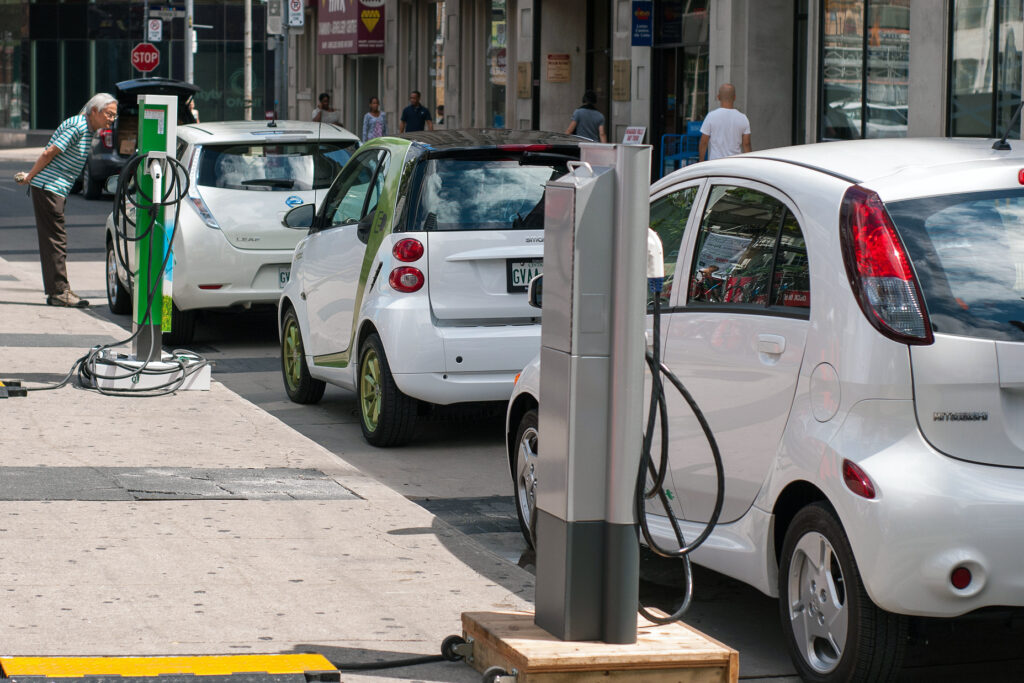A September 2017 report by David Griffith at the Thomas B. Fordham Institute, titled Teacher Absenteeism in Charter and Traditional Public Schools, finds one out of every four teachers (28.3 percent) at traditional public schools across the United States are “chronically absent,” meaning they are out of the classroom for sick or personal leave for at least 10 days in a typical 180-day school year. In Florida, more than 40 percent of traditional public school teachers are chronically absent. More than 50 percent of Nevada traditional public school teachers and a staggering 79 percent of Hawaii traditional public school teachers are chronically absent.
For comparison, the study finds just 10.3 percent of charter school teachers are chronically absent. In all but one of the 35 states with at least 10 charter schools, as well as in all 10 of the country’s 10 largest cities, traditional public schools employ a higher percentage of chronically absent teachers than charters do. In 12 states, traditional public school teachers are twice as likely to be chronically absent as their charter school peers, and four times as likely in seven other states. Traditional public school teachers in New York City and Washington, DC are four times as likely to be absent as their charter peers, while in Chicago, they are five times as likely to be absent.
Griffith also reports this chronic absenteeism gap is much more sizeable in states where district schools, but not charter schools, are required to collectively bargain. Further, teachers in unionized charter schools are twice as likely to be chronically absent as non-unionized charters. For example, California’s Green Dot network of charter schools, which is fully unionized, has absentee rates that are more than three times higher than the rate for the five largest non-unionized charter management organizations. Thirty-four percent of Green Dot teachers are chronically absent.
“The patterns [this study] highlights certainly suggest that the high chronic absenteeism rates we observe for teachers in traditional public schools are at least partly attributable to the generous leave policies and myriad job protections enshrined in state laws and local collective bargaining agreements,” Griffith concluded.
Students suffer when teachers are out of their classrooms. A working paper from the National Bureau of Economic Research (NBER) shows 10 days of teacher absences over the course of a school year can significantly reduce student achievement in mathematics. Teacher absences, the study found, “radically reduced … instructional intensity” by creating “discontinuities of instruction [and] the disruption of regular routines and procedures of the classroom.” Another NBER paper found replacing an average-performing teacher with a substitute is the equivalent of replacing that teacher with one who sits in just the 10th to 20th percentile range of productivity.
Only 39 percent of 4th graders and 32 percent of 8th graders nationwide tested “proficient” in math on the 2015 National Association of Education Progress (NAEP) test, also known as the “Nation’s Report Card.” Just 35 percent of 4th graders and 33 percent of and 8th graders tested proficient in reading. These results show the nation’s public school systems are failing to educate nearly seven out of 10 of their 4th grade and 8th grade students to a proficient level in reading and mathematics. It’s also noteworthy that not a single state managed to educate half of its students to a proficient level in all four categories examined. With so many public school teachers continually absent from the classroom, and what we know about the effect teacher absences have on their students, it is no wonder these scores are so low.
These startling absentee rates and middling test scores underscore the need to drastically expand private school choice programs – education savings accounts, school vouchers, and tax-credit scholarships – so that parents can have alternatives to the neighborhood public schools their children are currently forced to attend. When parents are given the opportunity to choose, all schools, public and private, must compete for their students and improve, which gives more children the opportunity to attend a quality school.
The following documents provide more information about teacher absenteeism and school choice programs.
Teacher Absenteeism in Charter and Traditional Public Schools
https://heartland.org/publications-resources/publications/teacher-absenteeism-in-charter-and-traditional-public-schools
In this study, David Griffith, a Fordham Institute senior research fellow and policy associate, examines teacher chronic absenteeism rates in charter and traditional public schools and finds teachers in traditional public schools are almost three times as likely to be chronically absent as teachers in charter schools. The chronic absenteeism gap between charter and traditional public school teachers is largest in states where districts, but not charters, are required to bargain collectively. Griffith’s results suggest the high chronic absenteeism rates he observes for teachers in traditional public schools are at least partly attributable to the generous leave policies enshrined in state laws and local collective bargaining agreements.
Education Savings Accounts: The Future of School Choice Has Arrived
https://heartland.org/publications-resources/publications/education-savings-accounts-the-future-of-school-choice-has-arrived
In this Heartland Policy Brief, Policy Analyst Tim Benson discusses how universal educational savings account (ESA) programs offer the most comprehensive range of educational choices to parents; describes the six ESA programs currently in operation; and reviews possible state-level constitutional challenges to ESA programs.
A Win-Win Solution: The Empirical Evidence on School Choice (Fourth Edition)
http://www.edchoice.org/wp-content/uploads/2016/05/A-Win-Win-Solution-The-Empirical-Evidence-on-School-Choice.pdf
This paper by EdChoice details the vast body of research on educational choice programs, determining school choice improves academic outcomes for students and schools, saves taxpayers’ money, reduces segregation in schools, and improves students’ civic values. This edition brings together a total of 100 empirical studies examining these essential questions in one comprehensive report.
Competition: For the Children
https://heartland.org/publications-resources/publications/competition-for-the-children
This study from the Texas Public Policy Foundation claims universal school choice results in higher test scores for students remaining in traditional public schools and improved high school graduation rates.
The Effects of Statewide Private School Choice on College Enrollment and Graduation: Evidence from the Florida Tax Credit Scholarship Program
https://heartland.org/publications-resources/publications/the-effects-of-statewide-private-school-choice-on-college-enrollment-and-graduation-evidence-from-the-florida-tax-credit-scholarship-program
This study from Urban Institute scholars Matthew Chingos and Daniel Kuehn shows Florida’s Tax Credit Scholarship Program boosted college enrollment for participating students by 15 percent, with students enrolled in the program for four or more years seeing a 46 percent hike.
School Choice: Answers to Frequently Asked Questions About State Constitutions’ Religion Clauses
https://heartland.org/publications-resources/publications/school-choice-answers-to-frequently-asked-questions-about-state-constitutions-religion-clauses
This resource, authored by Richard D. Komer of the Institute for Justice, serves as an excellent primer on Blaine amendments, compelled support clauses, and other state constitutional religious clauses.
2017 Schooling in America: Public Opinion on K–12 Education, Parent Experiences, School Choice, and the Role of the Federal Government
https://www.edchoice.org/wp-content/uploads/2017/11/2017-Schooling-In-America-by-Paul-DiPerna-Michael-Shaw-and-Andrew-D-Catt.pdf
This annual EdChoice survey, conducted in partnership with Braun Research, Inc., measures public opinion and awareness on a range of K–12 education topics, including parents’ schooling preferences, educational choice policies, and the federal government’s role in education. The survey also records response levels, differences, and intensities for citizens located across the country and in a variety of demographic groups.
2016/17 School Choice Report Card
https://heartland.org/publications-resources/publications/201617-school-choice-report-card
This report card published by the American Federation for Children scores 27 active non-special-needs voucher, scholarship tax-credit, and education savings account programs against ideal standards for program quality. The report is an excellent tool policymakers and researchers can use to help improve education programs and maximize student participation.
Recalibrating Accountability: Education Savings Accounts as Vehicles of Choice and Innovation
https://heartland.org/publications-resources/publications/recalibrating-accountability-education-savings-accounts-as-vehicles-of-choice-and-innovation?source=policybot
This Special Report from The Heritage Foundation and the Texas Public Policy Foundation explores how education savings accounts expand educational opportunities and hold education providers directly accountable to parents. The report also identifies several common types of regulations that can undermine the effectiveness of the program and how they can be avoided.
The Tax Credit Scholarship Audit: Do Publicly Funded Private School Choice Programs Save Money?
https://www.edchoice.org/wp-content/uploads/2017/03/Tax-Credit-Scholarship-Audit-by-Martin-F.-Lueken-UPDATED.pdf
In this audit, EdChoice Director of Fiscal Policy and Analysis Martin Lueken updates previous work examining the fiscal effects of private school choice programs on state governments, state and local taxpayers, and school districts. Lueken’s report analyzes savings from tax credit scholarship programs, which allow individuals and businesses to reduce their state tax liability by making a private donation to a nonprofit organization that provides scholarships for children to attend private schools of their choice. This audit looks at 10 tax credit scholarship programs operating in seven states between 1997 and 2014. These 10 programs serve 93 percent of all students participating in tax credit scholarship programs nationwide.
The School Voucher Audit: Do Publicly Funded Private School Choice Programs Save Money?
http://www.edchoice.org/wp-content/uploads/2015/07/The-School-Voucher-Audit-Do-Publicly-Funded-Private-School-Choice-Programs-Save-Money.pdf
This report by Jeff Spalding of EdChoice provides a program-for-program breakdown of school voucher costs and savings. On the whole, Spalding says these programs have provided a cumulative savings of $1.3 billion since 2007, or roughly $3,400 per pupil.
Nothing in this Research & Commentary is intended to influence the passage of legislation, and it does not necessarily represent the views of The Heartland Institute. For further information on this subject, visit School Reform News, The Heartland Institute’s website, and PolicyBot, Heartland’s free online research database.
The Heartland Institute can send an expert to your state to testify or brief your caucus; host an event in your state; or send you further information on a topic. Please don’t hesitate to contact us if we can be of assistance! If you have any questions or comments, contact John Nothdurft, Heartland’s director of government relations, at [email protected] or 312/377-4000.




